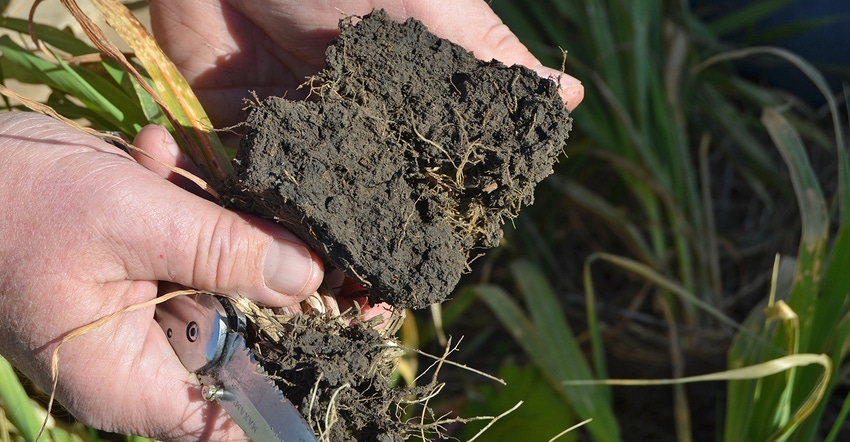March 5, 2019

University of Missouri Extension plant pathologist Kaitlyn Bissonnette says data from University of Missouri researchers show field populations of soybean cyst nematodes becoming more virulent on commercial cultivars. She says farmers should test soil in the spring before planting.
SCN quickly began spreading in Missouri in the 1970s and gained a strong foothold in most of the state’s soybean-growing counties by the 1990s. Easily transported by nature, cysts and eggs can be spread within a field or to new fields by soil, equipment, water or wind.
Problem pest
SCN-infected fields can see yields drop by as much as 14 bushels per acre when SCN reproduction is high, according to the SCN Coalition, a public-private partnership of researchers, Extension specialists and industry representatives.
Populations of SCN can exponentially increase. For example, 100 females can produce 39,062 eggs after four generations in one growing season, assuming each female produces 250 eggs, only half become female and only 1 percent of eggs will survive.
SCN is difficult to detect without testing because damage occurs to the root system before it can be seen. Symptoms include stunted plants, yellowing and yield loss. Yield loss can occur even when there are no visual symptoms, Bissonnette says.
Collection process
Bissonnette suggests gathering soil samples from fields to determine SCN levels. Here’s how:
Collect 15 to 20 core samples for every 20 acres.
Cores should be 6 to 8 inches deep and an inch in diameter.
Collect in a zigzag pattern and divide each field into management zones. Include high-risk areas such as the field entry, flooded areas, low spots and historically low-yielding areas.
For each collection zone, mix the core samples together.
Moisture content is important. “It’s difficult to get an egg count out of concrete or sludge,” Bissonnette says. Ideally, cores will stay intact during collection, but will easily fall apart upon mixing. When in doubt, err on the side of dry.
Put samples in a bag and label. If possible, mark down the GPS coordinates of the field where samples were collected. Send to a testing facility.
It is important to know your baseline SCN egg count and test every three to five years, Bissonnette says. Comparing SCN egg counts tells you whether your management plan is working long term.
Seek solutions
Work with crop advisers and Extension agronomists in your area to develop a management plan.
Those plans often start with testing fields for SCN egg count. Then rotate to resistant varieties. However, it should be noted that nematodes are becoming increasingly resistant to PI 88788, the genetic source of SCN resistance used in about 95% of all SCN-resistant soybean varieties. Many Extension educators suggest rotating to nonhost crops or consider using a nematode-protectant seed treatment.
For information on SCN, visit www.TheSCNCoalition.com.
Source: The University of Missouri Extension, which is solely responsible for the information provided and is wholly owned by the source. Informa Business Media and all its subsidiaries are not responsible for any of the content contained in this information asset.
You May Also Like




